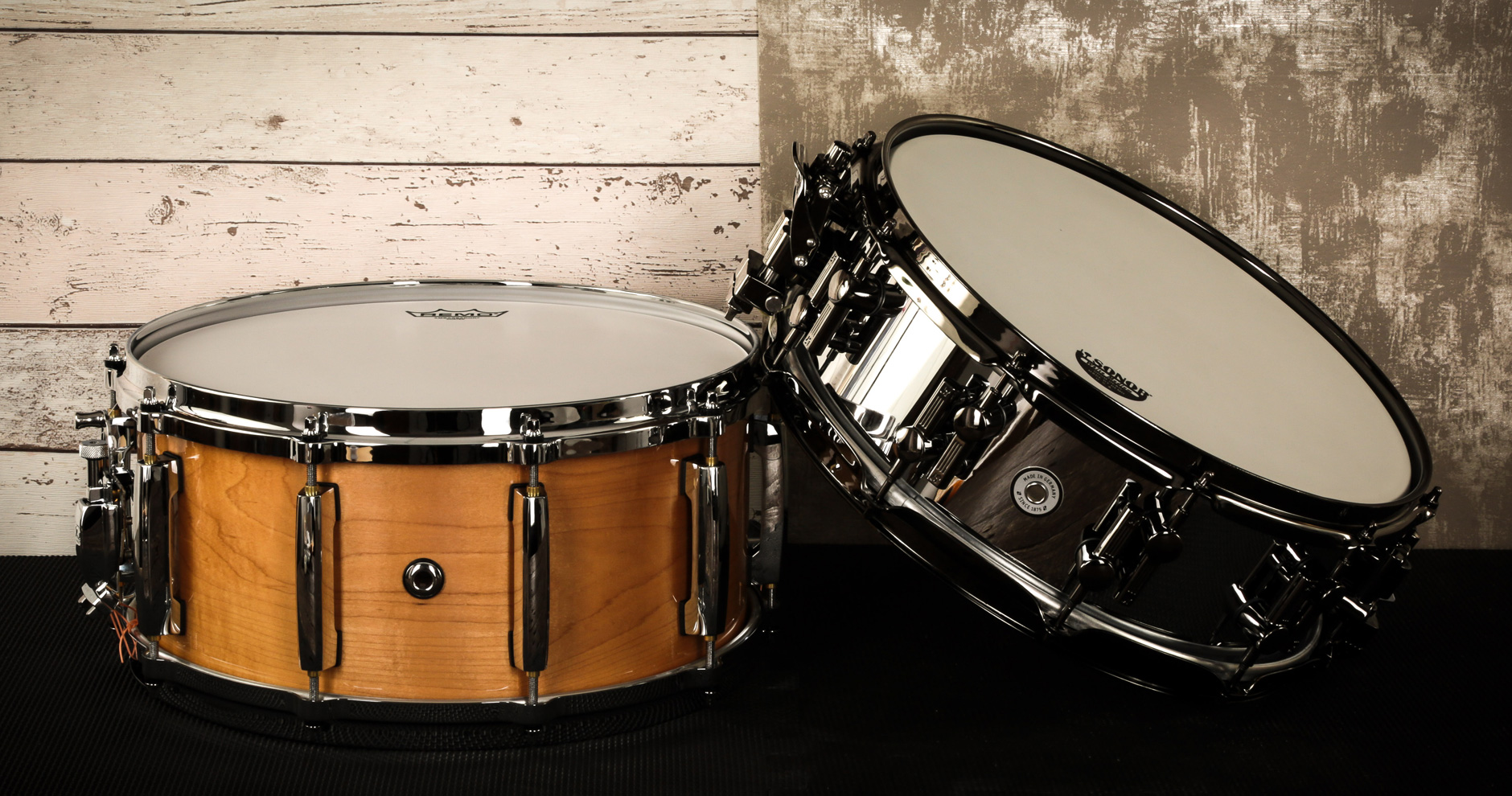The humble snare drum is arguably one of the most important elements in any band or ensemble. The backbeat has been a staple of modern music for the best part of a century, while ghost notes, fills and modern techniques provide our music with everything from groove to outright ferocity.
As with any percussion (or musical instrument for that matter), there’s an awful lot of choice when it comes to snare drums. Different varieties offer different sounds, responses and aesthetics depending on your style. These varieties differ in terms of shape, size, skin, hardware, tuning – the list goes on. But arguably, the most important aspect to consider is the material.
The bottom line is this: wood or metal? In this article we’ll dig deep into the primary differences between the two. Here’s what we’ll be comparing:
- Sound
- Looks
- Feel & response
- Practicality
- Construction
Without further ado, let’s get to it…
What is a snare drum?
To start us off, let’s cover the basics. You might be a professional drummer looking to upgrade your setup, or you might be a total novice looking for advice on your first kit. Either way, we feel it’s a good idea to clear what a snare is and how it works.
As with most contemporary percussion, a snare drum features a round frame with two heads – one on top, one on the bottom. The snare element refers to a selection of metal wires attached to one or both of the heads – most commonly on the bottom. This wires can be tightened against the drum head or loosened completely. When tightened, the snare is considered engaged, resulting in a bright, quick attack. When loosened, it’s the opposite, with the sound resembling a tom.
Wood Snare Drums
Snares have existed in one form or another for centuries. Derived from medieval times, they were commonly used as marching drums – an application that lives on to this day. Naturally, these drums were traditionally made of wood due to its availability and relative lightness. Even now, wood remains the most popular material for snare drums.
Most Popular Snare Drum Woods
- Birch – great for projection due to good low-end response and pronounced, crystal-clear treble. Plenty of attack, great for more aggressive styles.
- Maple – slightly more well-rounded than Birch, but still with a healthy bass response. Clear, balanced sound makes it highly versatile.
- Beech – this hard wood offers a balanced tone not dissimilar from Maple, but with a slight mid-boost and accentuated low-end. Great for a super-fat snare sound.
- Mahogany – known for a rich warmth and resonance in the bass and low-mid frequencies. Mahogany used to be a gold standard for shells, so is associated with a vintage sound.
- Poplar – a softer wood, Poplar is becoming increasingly popular. Its sound is comparable to Mahogany but with some of the bass substituted for more top-end.
Honourable mentions: Walnut, Ash, Basswood, Oak, Bubinga, Cherry. It’s worth pointing out that many snares use multiple woods, for sound, practicality and budget reasons. Many believe that solid-wood snares (rather than thin multi-ply constructions) sound more resonant, an argument that’ll be familiar to many guitarists. Snares with multi-ply shells, however, can sometimes be more durable and offer unique tones. They also tend to be more affordable!
Why choose a wood snare drum?
The reasons for choosing a wood snare drum may be obvious, but there’s plenty to consider. The sound of a wooden snare drum is arguably more familiar. The woods mentioned above have been used for centuries to produce drums of all shapes and sizes – there’s a reason they’re still popular.
The sound of a wooden snare drum can range from bright and focused to vintage warmth. Some materials are more versatile than others (Maple), while some provide an unmistakable sound (Birch). If you’re looking for something familiar, versatile, or for a particular style of music, you’ll definitely find a wooden snare to suit you.
Wooden snare aesthetics can vary greatly, as with many instruments. Solid finishes, transparent finishes, natural grain. For those who prefer a more organic look, nothing beats the grain of a wood like Birdseye Maple or Bubinga. Price-wise, solid wood snares tend to cost more (as mentioned earlier), but are generally comparable to snares of other materials.







Responses & Questions